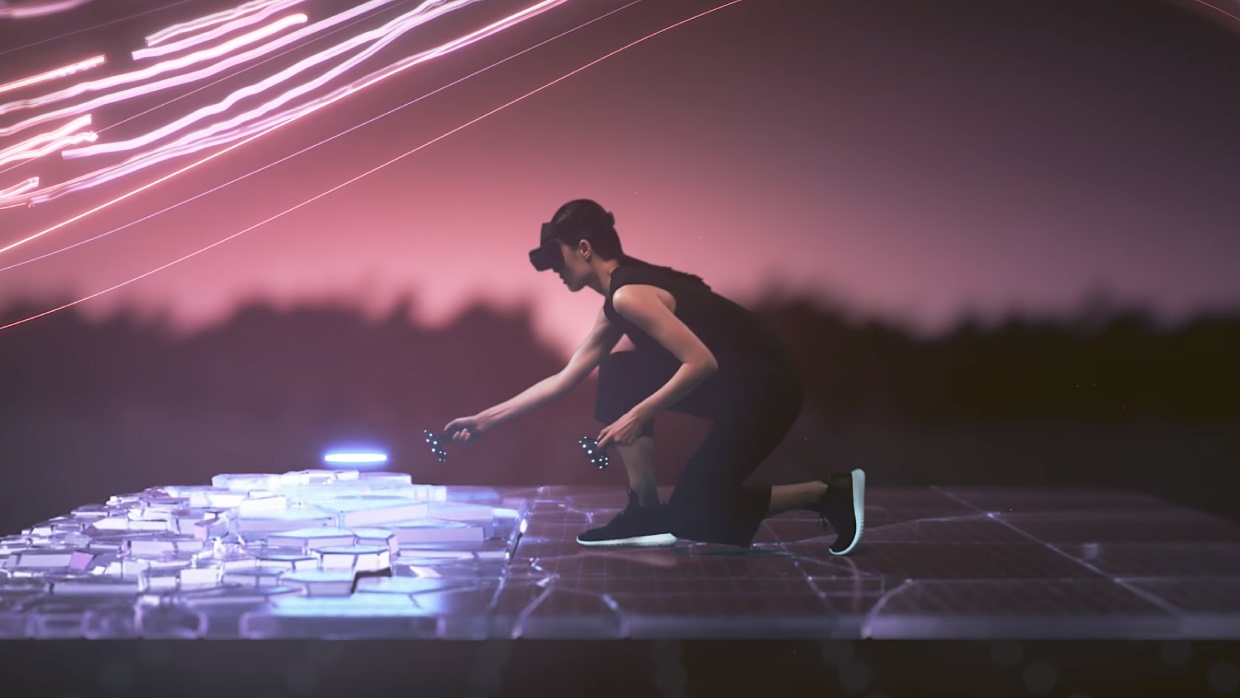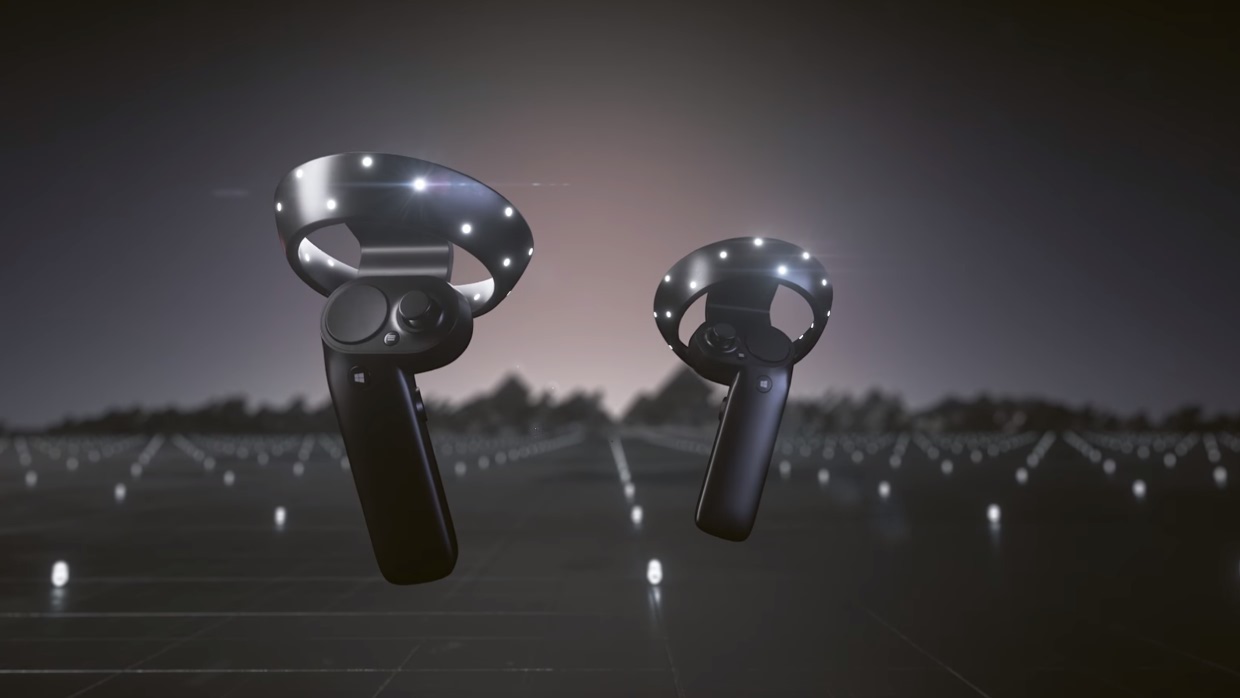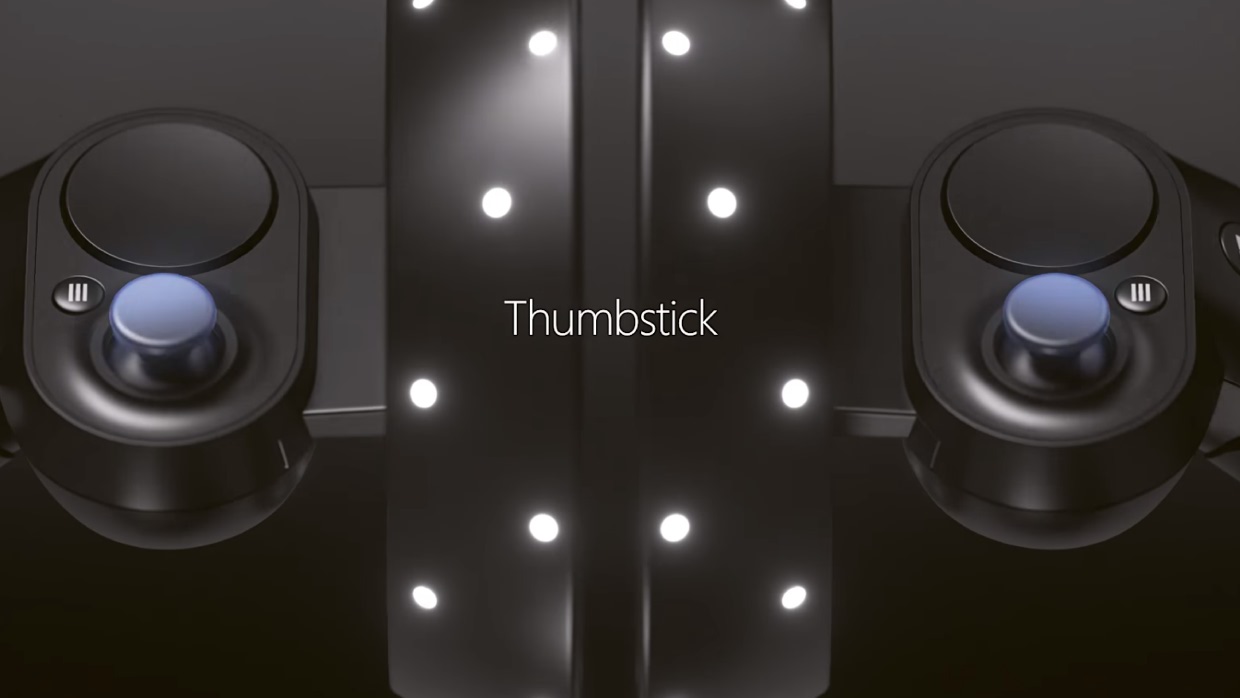
Microsoft have been using gestures like the air tap and bloom when interacting with the HoloLens, but when you’re in a fully occluded VR world, you need to be able to interact with your world without seeing your hands. This is done by using motion controllers, as seen by companies like HTC and Oculus.
Now it’s Microsoft’s turn to show how users are going to interact with the experience provided by Windows Mixed Reality. They are coming later this year and I can’t wait to get my hands on them.
Microsoft have a long history of creating new types of hardware to provide a consistent experience across third party devices. The original Microsoft Mouse was released alongside Windows Word in order to provide a way for users to move their cursor. Like the mouse it is in Microsoft’s interest to allow third parties to create their own motion controllers, but I expect that they’ll all be compatible and have the same technology inside.

Interestingly it seems that Microsoft has decided that they do not need to make these controllers work with the HoloLens – at least not with the existing version. The HoloLens hasn’t seen much in the way of software updates recently, so I won’t rule out the chances of them adding it in the future, but I get the feeling that Microsoft want people to use their hands for that device.
In my opinion we need these controllers for the HoloLens too – the Clicker is not enough… but that’s a story for another time. How do these new controllers work?
Optical Tracking
All of the Windows Mixed Reality headsets provide inside-out tracking – this means that each device will have the sensors required to track the world in the head-mounted display without any additional sensors or tracking devices around the room.
The new Motion Controllers take advantage of this technology to provide six degrees of freedom without any extra wires or mess. This also reduces the complexity of the controller, allowing for a complete tracking solution without being too expensive.
It’s worth mentioning that I assume there is some additional motion tracking in the controllers (so you can put it behind your back, for example), but the truly accurate measurements will be done optically when the headset have a line of sight to the lights around the controller.
![]()
Buttons
So what kinds of controls can we expect to have?
- Windows buttons
- Menu buttons
- Trigger buttons
- Grab buttons
- Analogue thumbsticks
- Trackpad surface
Currently, it’s unclear if the trigger and grab buttons are analogue or digital. Analogue buttons would enable the user to gently grab items as well as provide a wide range of trigger actions, much like accelerating in Forza when using an Xbox One controller.
I’m also super interested to know how well the trackpad surface can be used. It seems to have the ability to click, so it can be used much like a primary button too.
Watch the introduction video and see for yourself!



